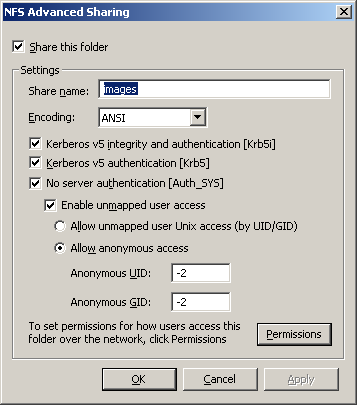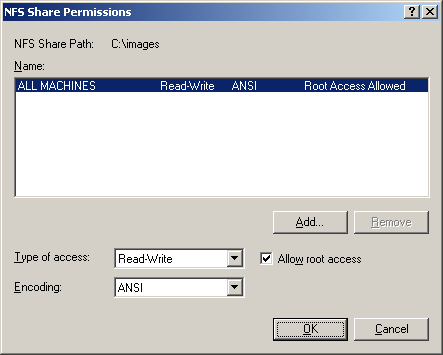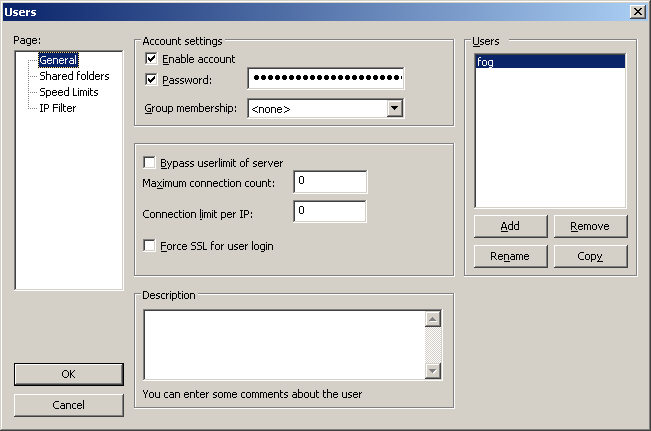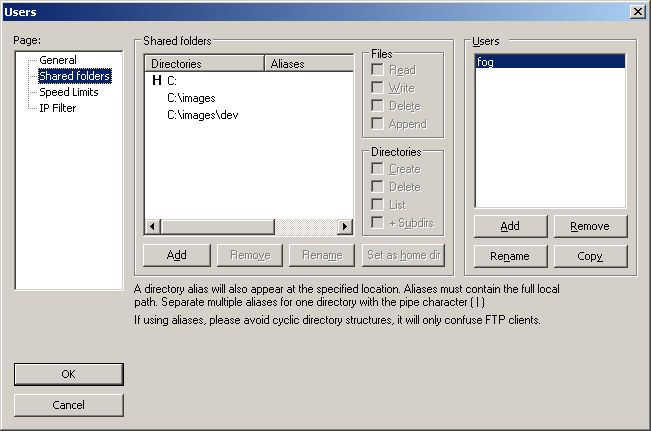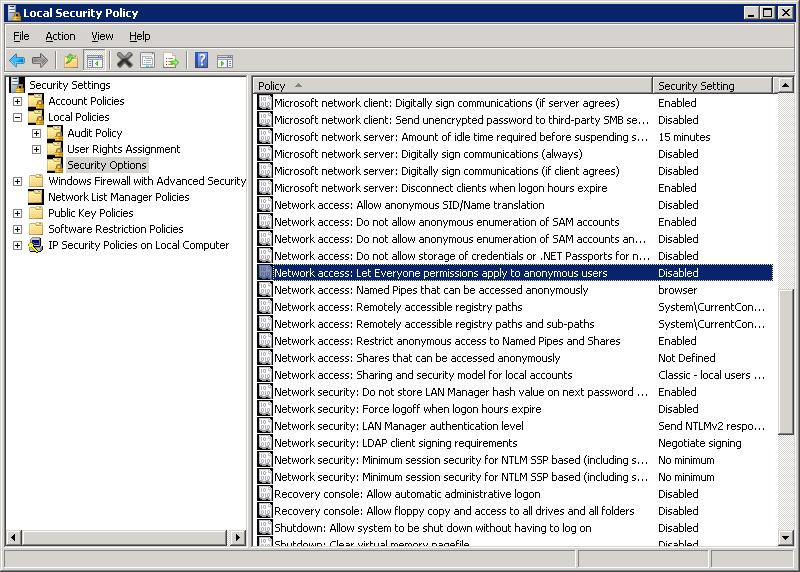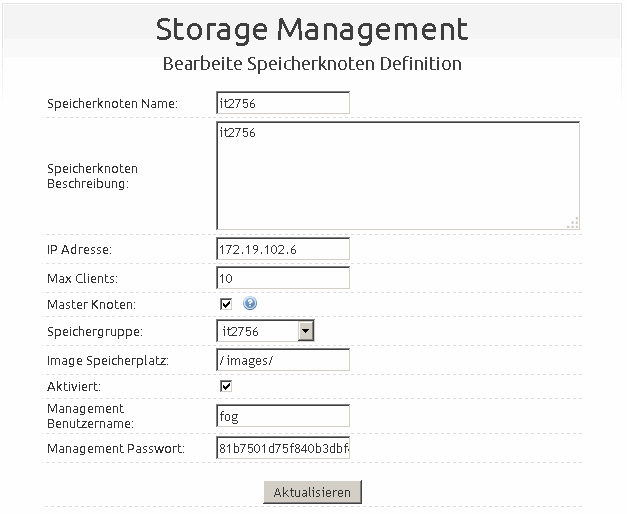Windows Storage Node
Contents
Windows Storage Node
- This has been put together from the forum and should be useful to many. Windows Server NFS
Requirements
- Windows Server 2008 (R2)/Windows Server 2012 (R2)
- NFS Role Installed
- Filezilla Installed
Windows Step-by-Step
- Create folder C:\images
- Create folder C:\images\dev
- Set Sharing
- Set Permissions: Set proper permissions for All Machines
- Set Security: Make sure you do this for C:\, C:\images, and C:\images\dev
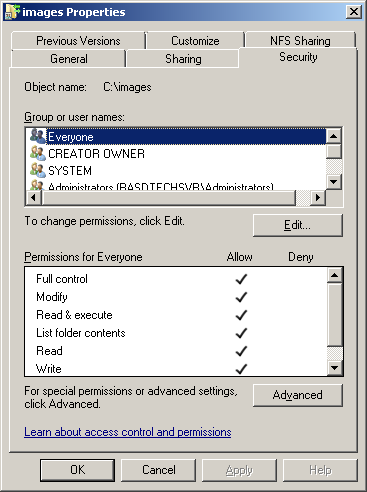
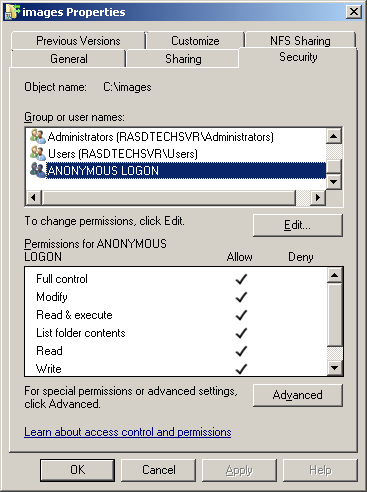
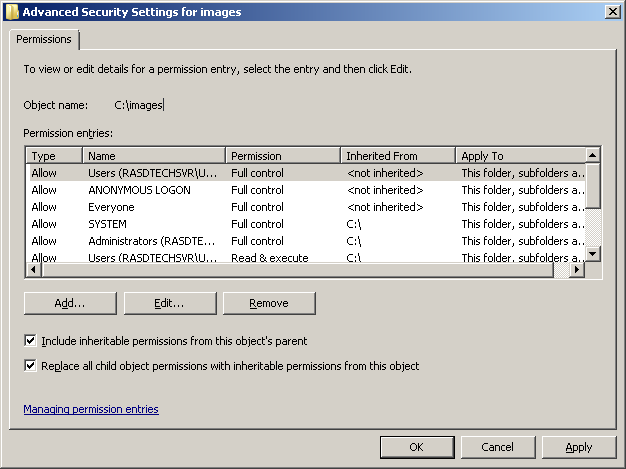
- Setup Filezilla Account: Create fog account and make sure this is the same password for your Management password
- Setup Filezilla Folders: Make sure these files $ Directories all have Read, write, delete, append rights
- Set Local Policies: Set this policy to Enabled
- Configure NFS Server: Stop NFS Server Service, Edit Transport Protocol to TCP+UDP, and Start NFS Server Service
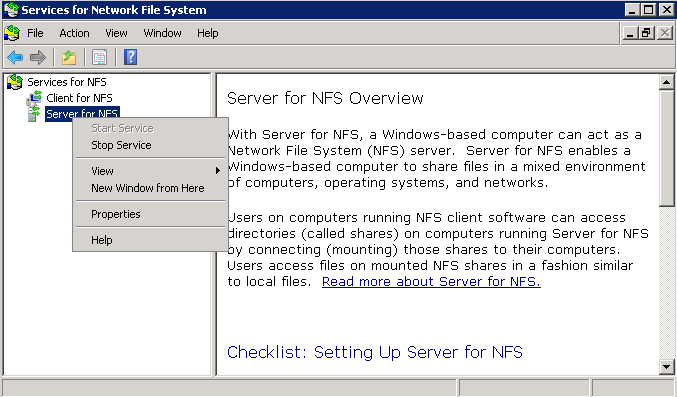
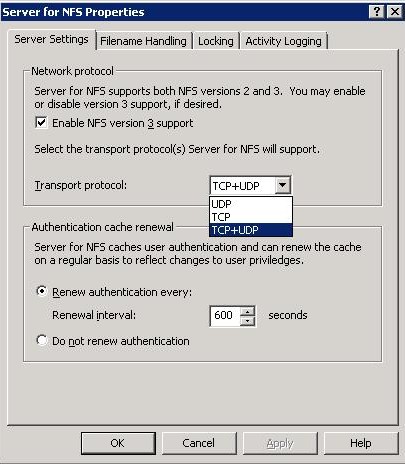
Fog Server
Here is the tricky part.....You need to copy the hidden files on your Linux server to your windows server. These files are located @:
/images/.mntcheck --> c:\images\ /images/dev/.mntcheck --> c:\images\dev\
xxx.xxx.xxx.xxx ==> ip address of the windows server
I mounted the NFS drive and just did a cp command.
Using terminal or ssh remote:
cd / sudo mkdir images2 sudo chmod 777 images2 sudo mount xxx.xxx.xxx.xxx:/images /images2 sudo cp /images/.mntcheck /images2 sudo cp /images/dev/.mntcheck /images2/dev/ sudo umount /images2
Fog Web GUI
- Then continue by adding a storage node just as you would in the wiki.
- I Simply added a Storage Node Definition in its own Storage Group independent to the default storage Group, added it's IP 172.19.102.6 and the path /images/ because it's the path 172.19.102.6 exports also /images/dev/ like an original FOG node does.
Tom Elliott Senior Developer This is an interesting thread to me as it shows the flexibility of FOG. While cumbersome, it CAN be "ported" to run on nearly any OS.
--Wolfbane8653.3362 (talk) 18:51, 16 June 2014 (CDT)
